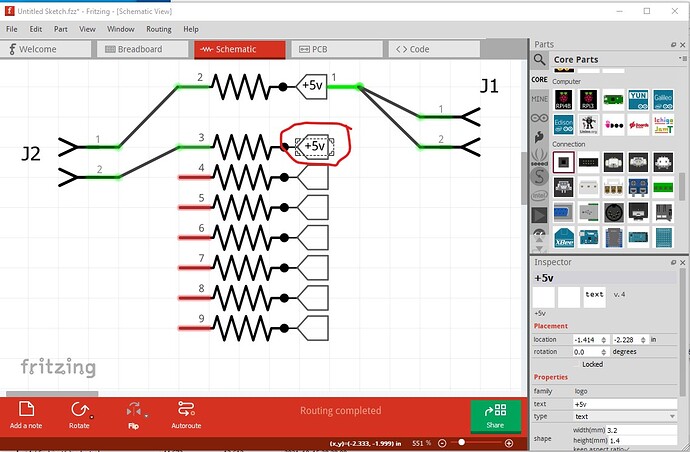I realized while I knew what I was suggesting, without a part/picture it wasn’t going to make much sense to anyone else. So a picture and a part of what I mean:
The “net label” is actually schematic text (with the size reduced to fit in the box.) The down side is that it doesn’t move with the subpart, if you move the subpart you have to manually move the label (which is a PITA!) but I don’t know any other way to do it. Here is the part that creates the above
8 Resistor Network-multipart.fzpz (6.1 KB)
it has the same moduleId as your posted part so you will need to delete that before you can load the new one. The 8 bused connections have 7 new connectors which are all overlaid on pin 1 and included in the bus (and the same happens in breadboard and pcb, 8 pins overlaid on pin 1) You probably don’t actually need the 7 overlaid pins in the bus, I expect this would work with just the image circled in red above and only one pin in the subpart definition although I haven’t tried that.
Peter
